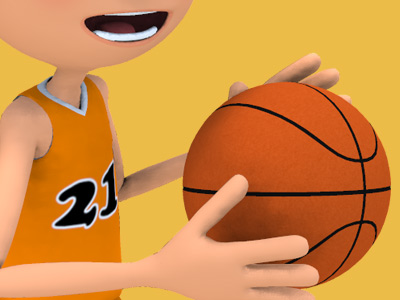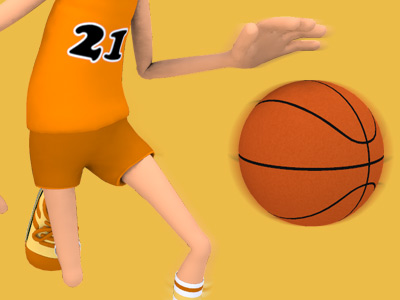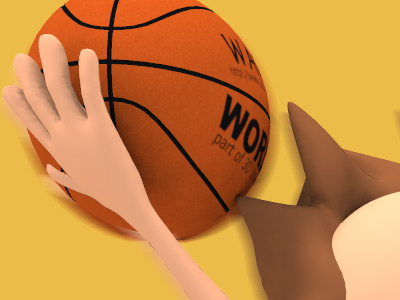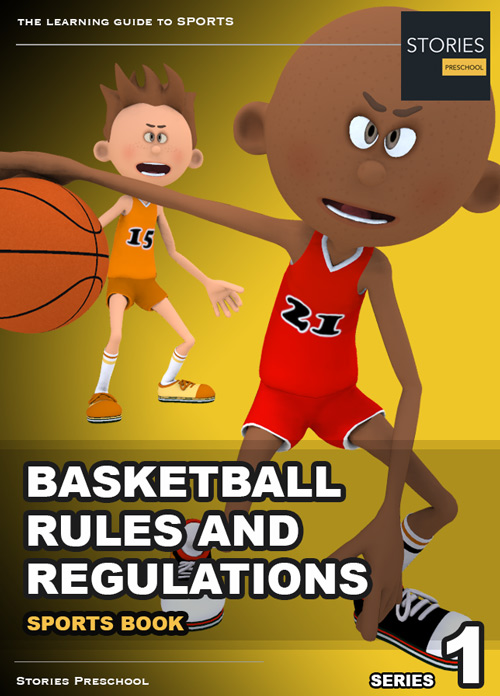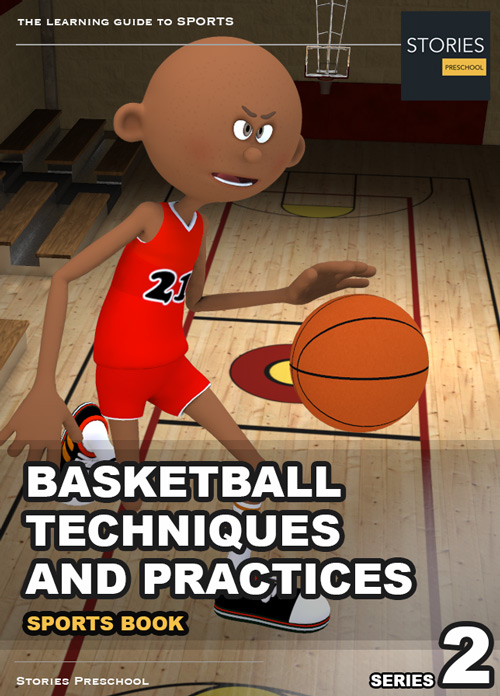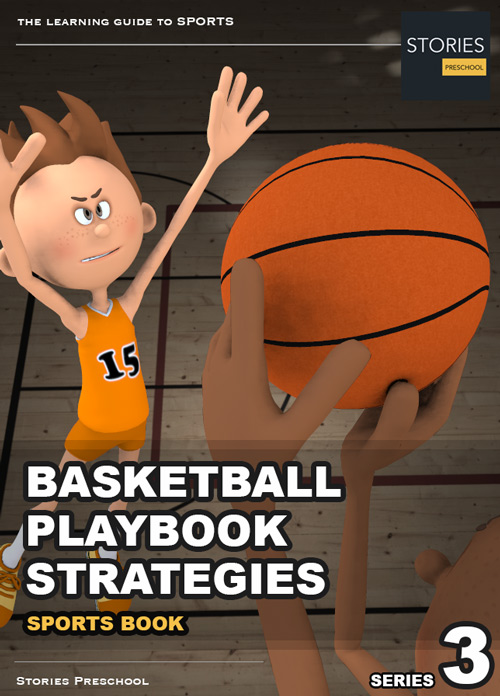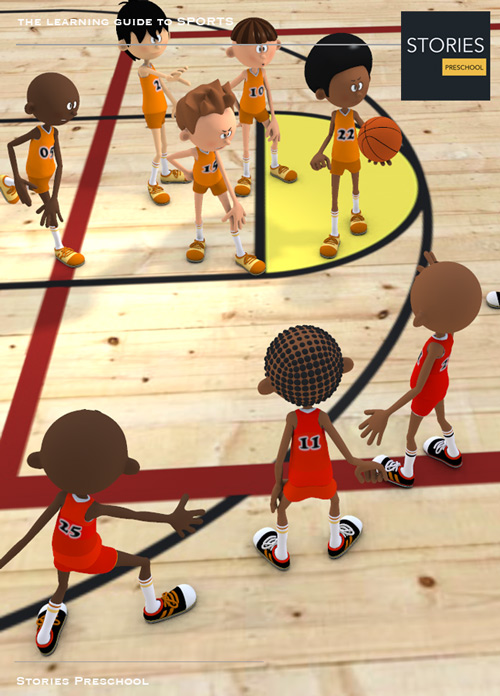Basketball

Basketball Shooting
Shooting is the act of attempting to score points by throwing the ball through the basket, methods varying with players and situations.
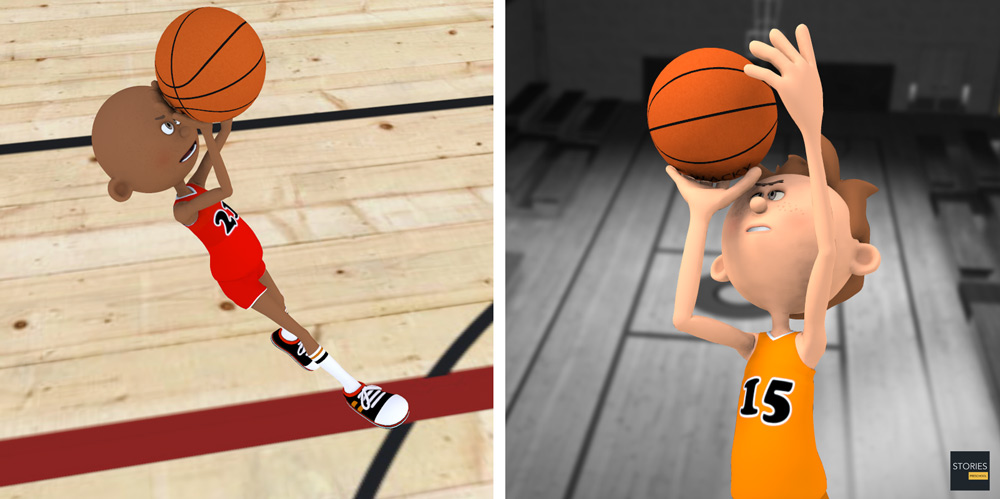
Typically, a player faces the basket with both feet facing the basket. A player will rest the ball on the fingertips of the dominant hand (the shooting arm) slightly above the head, with the other hand supporting the side of the ball. The ball is usually shot by jumping (though not always) and extending the shooting arm. The shooting arm, fully extended with the wrist fully bent, is held stationary for a moment following the release of the ball, known as a follow-through. Players often try to put a steady backspin on the ball to absorb its impact with the rim. The ideal trajectory of the shot is somewhat controversial, but generally a proper arc is recommended. Players may shoot directly into the basket or may use the backboard to redirect the ball into the basket.
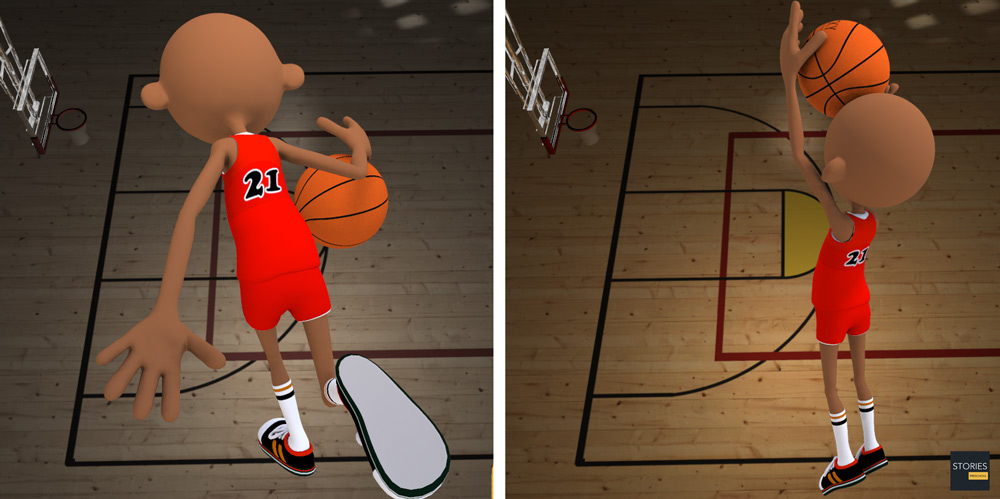
The two most common shots that use the above described setup are the set-shot and the jump-shot. The set-shot is taken from a standing position, with neither foot leaving the floor, typically used for free throws, and in other circumstances while the jump-shot is taken in mid-air, the ball released near the top of the jump. This provides much greater power and range, and it also allows the player to elevate over the defender. Failure to release the ball before the feet return to the floor is considered a traveling violation.
Another common shot is called the lay-up. This shot requires the player to be in motion toward the basket, and to "lay" the ball "up" and into the basket, typically off the backboard (the backboard-free, underhand version is called a finger roll). The most crowd-pleasing and typically highest-percentage accuracy shot is the slam dunk, in which the player jumps very high and throws the ball downward, through the basket while touching it.
Another shot that is becoming common is the "circus shot". The circus shot is a low-percentage shot that is flipped, heaved, scooped, or flung toward the hoop while the shooter is off-balance, airborne, falling down, and/or facing away from the basket. A back-shot is a shot taken when the player is facing away from the basket, and may be shot with the dominant hand, or both; but there is a very low chance that the shot will be successful.
A shot that misses both the rim and the backboard completely is referred to as an air-ball. A particularly bad shot, or one that only hits the backboard, is jocularly called a brick. The 'hang time is the length of time a player stays in the air after jumping, either to make a slam dunk, lay-up or jump shot.
A bank shot in basketball is a shot that relies on the ball bouncing off the backboard and into the basket. It is frequently used for mid-range jump shots from around a 45° angle and layups. It is not commonly used for long-range shots or shots from the middle or near the baseline. The purpose of using the backboard is to try to hit the backboard at an angle, thus slowing the speed of the ball and increasing its chances of falling into the hoop. Researchers at North Carolina State University found that bank shots may be 20 percent more effective up to a distance of about 12 feet than direct shots. Another term for a bank shot is "off the glass." NBA players known for using the bank shot often are Sam Jones, George Gervin, Tim Duncan, Dwyane Wade, Dirk Nowitzki, Scottie Pippen, and Kobe Bryant.
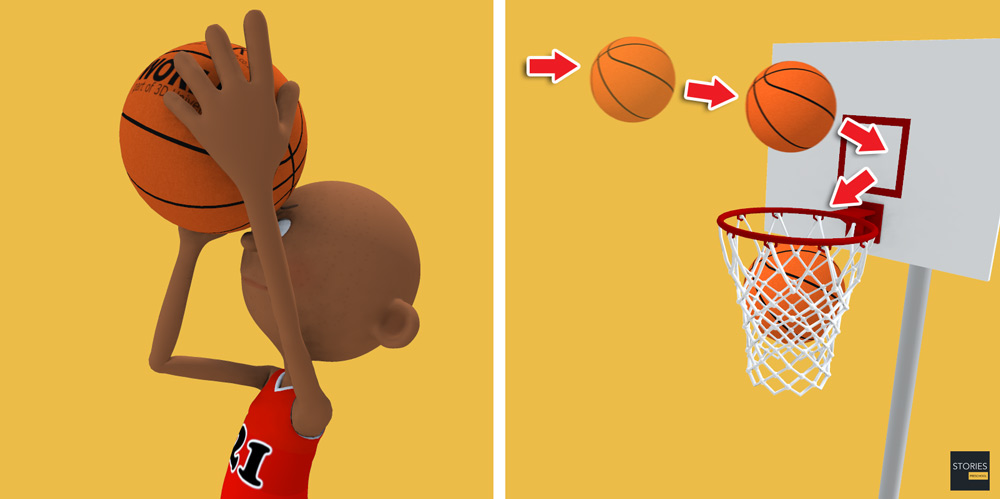
A putback describes a situation where a player secures an offensive rebound, then immediately scores a basket. If the player secures the rebound while in the air, for the shot to be considered a putback, the player can land on the ground before shooting, but cannot dribble before taking the shot. If the player does not secure the rebound but instead taps the ball into the basket, it is considered a tip-in. There is a point where the difference between a putback and a tip-in is subjective (e.g., a one-handed rebound in the air followed by a shot before touching the ground). A putback jam is a spectacular alternative to the tip-in, where the ball is slam-dunked off the rebound in the same motion. Josh Smith and Kenyon Martin are the perfectors of the putback jam. It is also a primary source of scoring for All-Star center Dwight Howard, who led the NBA in dunks in the 2008–2009, 2009–2010 and 2010–2011 seasons.
Pull up jumper
A pull-up jumper is an offensive move, where the ball handler in the act of dribbling, 'pulls up' to shoot the basketball. This is especially effective as the defender is not able to react in time to affect or block the shot. This move is widely used by players in the NBA, such as Kevin Durant of the Oklahoma City Thunder, and LeBron James of the Cleveland Cavaliers.

Turnaround jump shot
When a player posts up, in order to shoot he has to turn around to face the basket. This can be done by turning in the air, timing the jump shot when the defender is not likely to jump and challenge the shot. Though a fade-away version of this move was perfected by Larry Bird and Dirk Nowitzki, players such as Michael Jordan, Kobe Bryant, Hakeem Olajuwon, and Kevin Garnett are also well known for it.
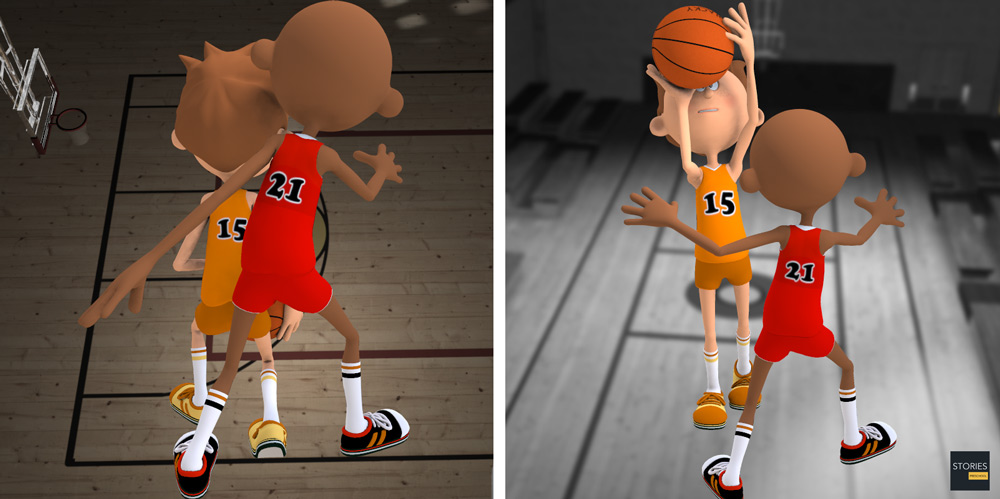
Fadeaway
A fadeaway shot is a variation on a set jump shot in which the shooter attempts his shot leaning backward, creating the effect of "fading away" from his defender. This makes it more difficult for the defender to contest the shot. The fadeaway usually has less range than a regular jump shot, because the ball has backwards momentum due to its inertia, making it somewhat tougher to project the ball over long distances. Michael Jordan, Reggie Miller, Kobe Bryant, Dwyane Wade, Dirk Nowitzki, Karl Malone, and Steve Nash are famous for their use of the fadeaway. Wilt Chamberlain was criticized for his frequent use of the fadeaway jumper, since the follow-through usually carries the shooter away from the basket and out of rebounding position.
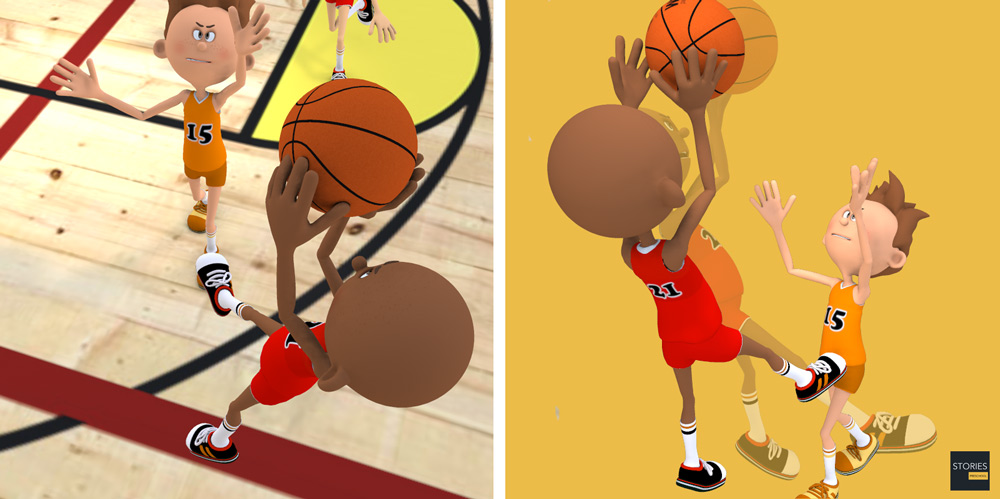
Step-Back Jump Shot
The shooter takes a quick jab step away from the basket and takes a normal jump shot. Stephen Curry is famous for his step-back jumper.
SPORTS
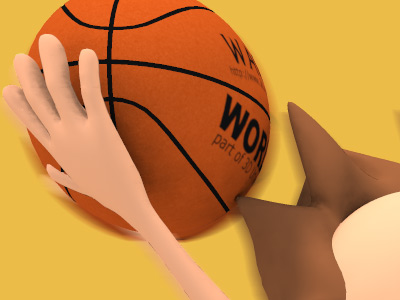
RESOURCES
This article uses material from the Wikipedia articles "Basketball" and "Basketball moves", which is released under the Creative Commons Attribution-Share-Alike License 3.0.
© Stories Preschool. All Rights Reserved.
